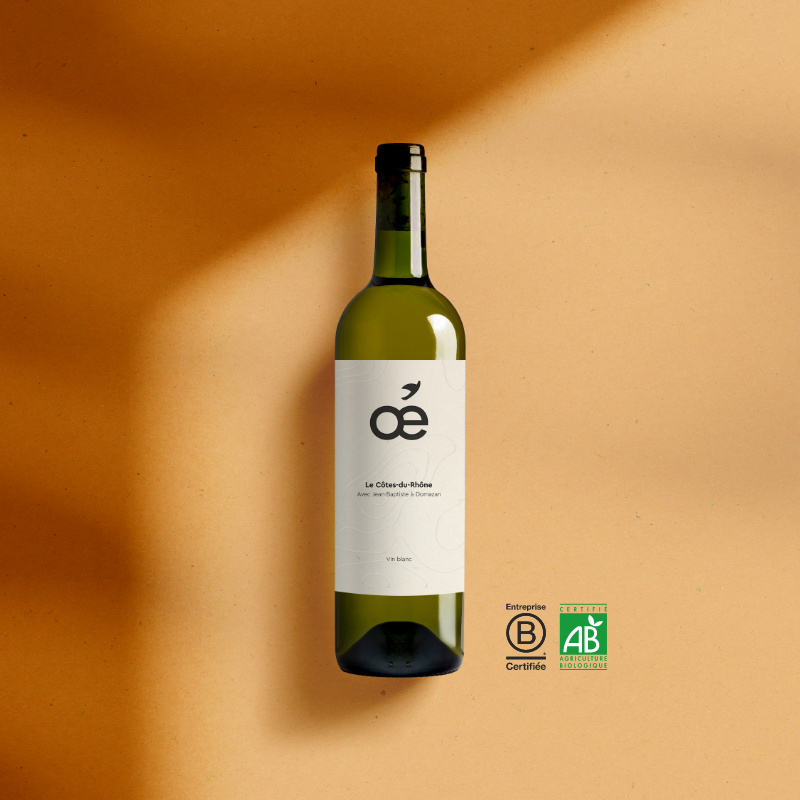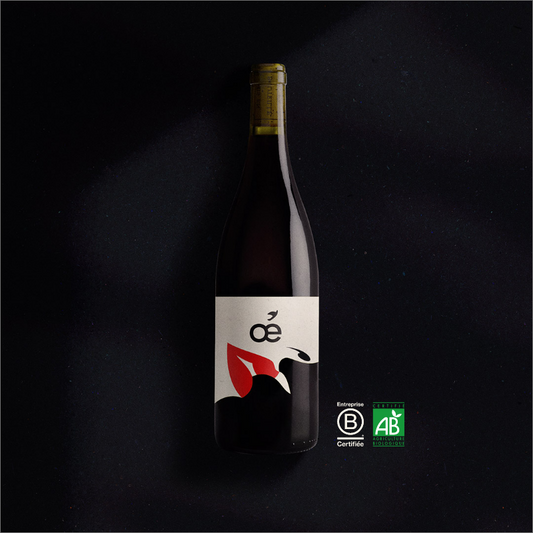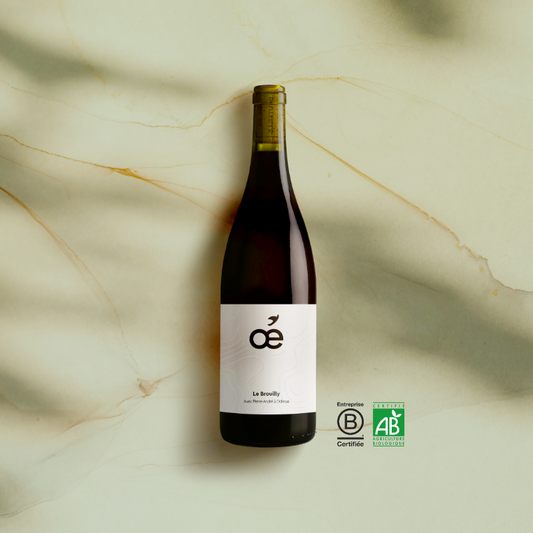The Costières de Nîmes appellation is the southernmost of the Rhône Valley wines and 25% of the vineyard is organically farmed thanks to projects such as the Costières de Nîmes Landscape and Environmental Charter which have been in place for more than 10 years. Something to rejoice with the Oé team!
The grape varieties of the Costières de Nîmes appellation
Born in 1989, she shares the most beautiful dresses, white, pink and red. The dominant grape varieties in red are Grenache, Syrah, Mourvèdre and Cinsault . The latter is particularly used for the production of rosé wines. On the white side, Grenache blanc, Roussanne, Marsanne, Clairette, Bourboulenc, Viognier, Macabeu, Vermentino are authorized. It should also be noted that 10% white grapes are authorized in the red vats, like the Viognier in the Côtes-Rôties. Each cuvée must contain two grape varieties to qualify for the appellation . Most wines, and in particular organic wines from all regions of France, are intended for relatively quick consumption, within 2 to 3 years, both red and white.
But some winegrowers think about parcel selections that transcend the terroir and thus access the menus of great restaurants. This is possible thanks to the terroirs of the appellation, many large pebbles rolled on a clay-limestone mineral structure . These pebbles are often assimilated to the famous Châteauneuf-du-Pape, but are nevertheless present throughout the southern Rhône Valley . These hot stones in the middle of the day, store heat to restore it during the night.
The wines are undeniably destined to accompany a generous cuisine, fine meats for the reds, from beef to lamb, including game and well seasoned and seasonal vegetables in gratins, pies or soups for vegetarians. The varied profiles of whites can accompany seafood products as well as white meats, characterful cheeses or a white asparagus risotto.
The Costières de Nîmes appellation in a few figures:
• 55% red wines, 5% whites and 40% rosés.
• The average annual yield of the wines of the appellation is 57 hectoliters per hectare
• The production area is 3948 hectares
• Total production is almost 212,000 hectoliters
• 41% of Costières de Nîmes wines are exported
Red wines from the Costières de Nîmes appellation
The main grape varieties used for the production of red and rosé wines of the appellation are Syrah, Grenache and Mourvèdre, which together represent 80% of the grape variety. And of the remaining 20%, it is Carignan and Cinsault . Once assembled, the red wines give wines with a lot of character, very present tannins in the mouth while keeping a little freshness in the finish.
A red wine from this appellation can be kept for 2 to 5 years and decanted between 1 and 2 hours before serving. The Oé team advises you to keep it in a cellar between 16 and 17°C. You can enjoy it with grilled vegetable gratins, characterful cheeses or a side of asparagus with tarragon. For meat lovers, it goes very well with a good butcher's beef carpaccio with pesto verde and parmesan.
The white wines of the Costières de Nîmes appellation
The white wines of the Costières de Nîmes appellation are still wines and qualified as dry white wines. The vineyard is located in the southern Rhône Valley in the south-east of France. The terroir of the Costières de Nîmes appellation benefits from a Mediterranean climate and grows its vines on limestone and clay soils (clay-limestone), on marl and rolled pebbles.
The main grape varieties of the appellation are Marsanne, Grenache and Roussanne . The Costières de Nîmes appellation is an AOC (Appellation d'Origine Contrôlée) and an AOP (Appellation d'Origine Protégée). The best vintages of white wines from the Costières de Nîmes appellation are 1988 and 1998.
To serve a white Costière de Nîmes at the best temperature, the organic wine must be between 9 and 10°C and poured into a white wine glass. For the old white wines of the appellation, you can serve between 11 and 13°C. If you decant your wines one to two hours before tasting - especially if they are organic wines - they will have time to open up well and provide you with optimal tasting sensations.
Regarding the conservation of wine, you can store them in a wine cellar between 12 and 14°. Your bottles of Costières de Nîmes wine can be kept for between 3 and 15 years. In the Rhône Valley, many dry white wines have greater aging potential, such as Condrieu, Châteauneuf-du-Pape, white Hermitage, Château Grillet, for example.





